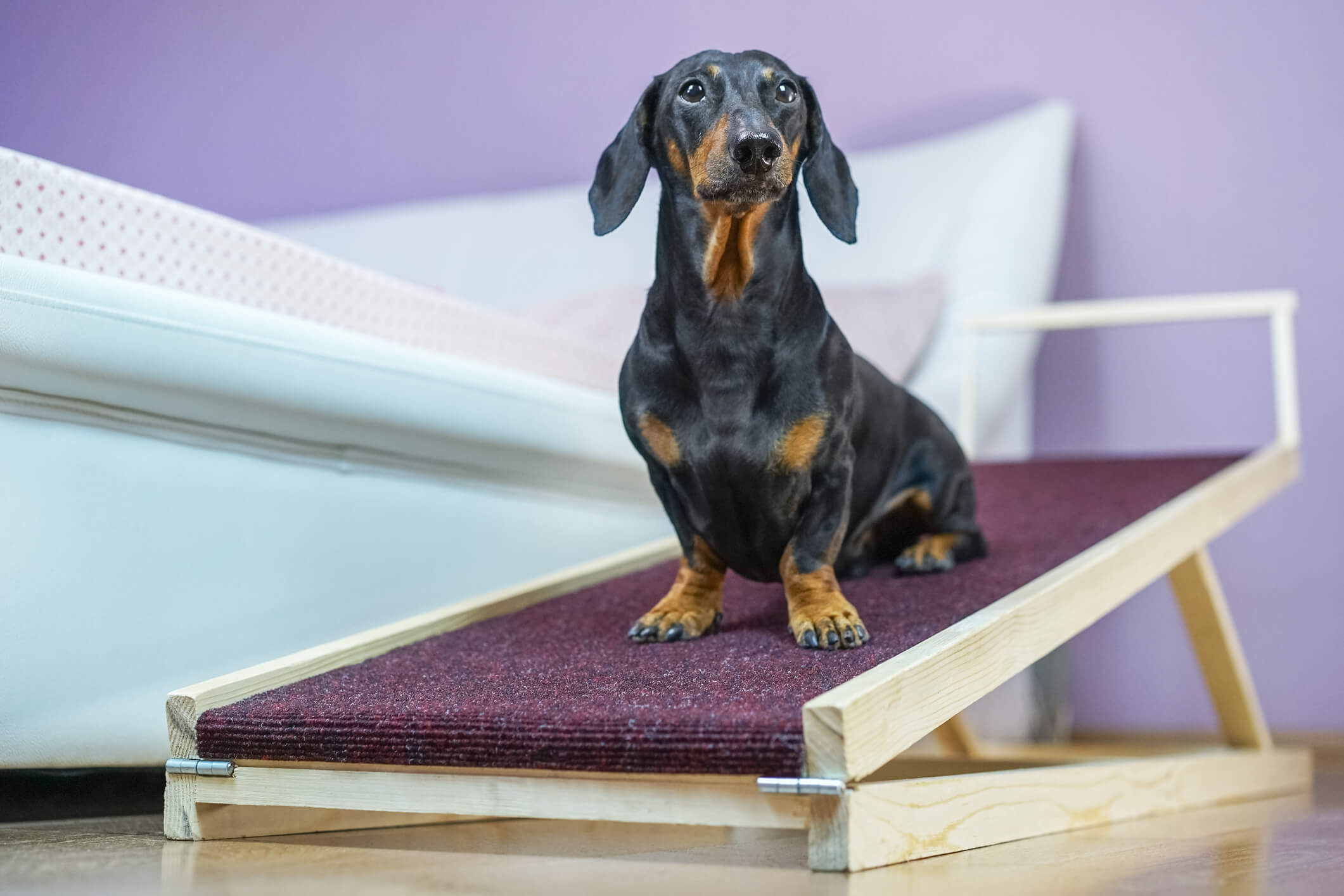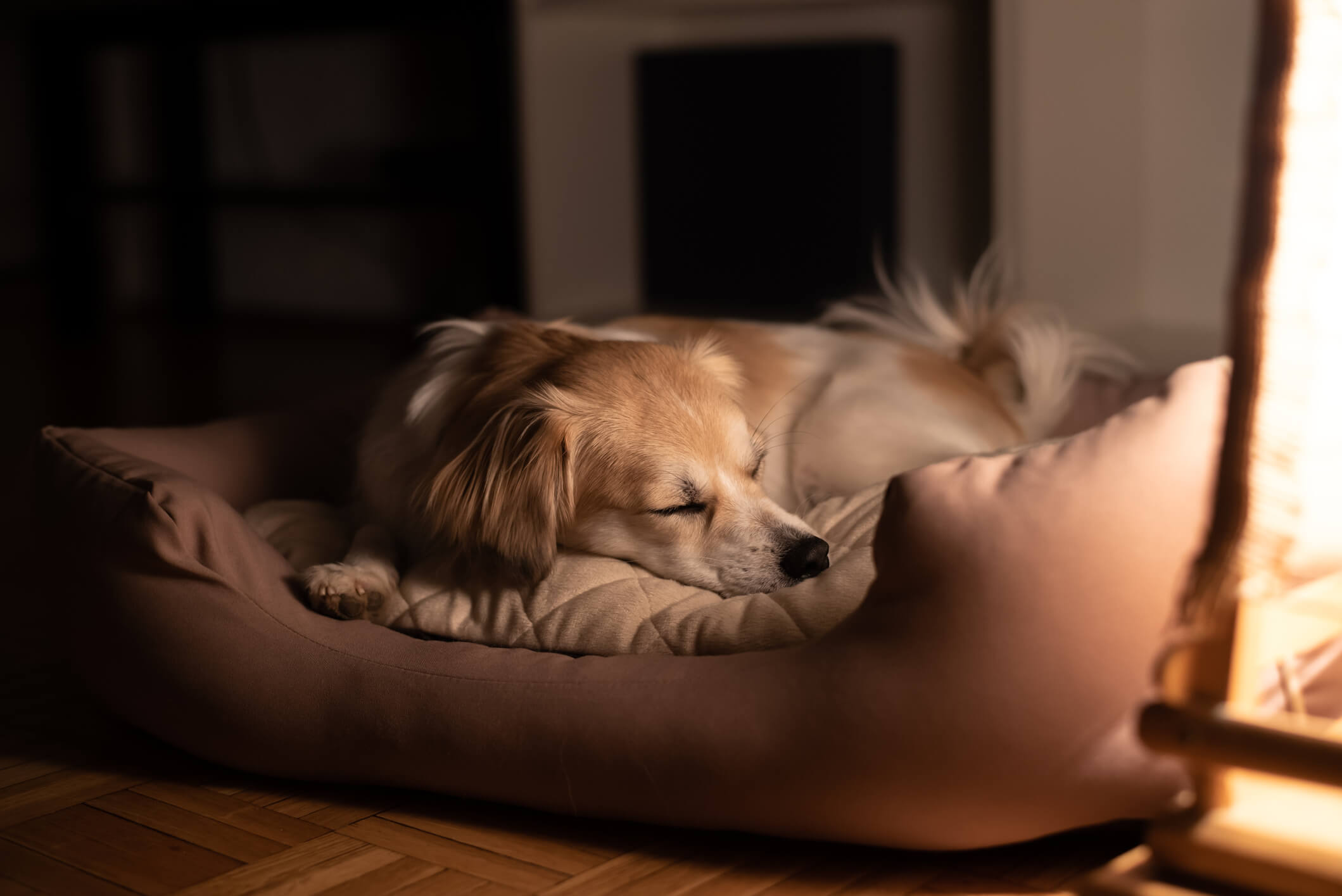
Senior Ups and Downs: Help Your Aging Dog Navigate Your Home Safely
Just like humans, our furry companions often experience mobility issues later in life. Many pets develop arthritis, which makes it painful to navigate stairs and furniture. All of a sudden, owners might notice their senior pet bumping into the coffee table or tripping over objects left on the floor. Stiff joints, visual impairments and other disabilities are all normal parts of the aging process.
As a loving pet parent, there are many adjustments you can make around the house to help your senior dog overcome their physical limitations. Here are some ways to increase your pet’s mobility and comfort as they enter this new chapter of their life.
Accommodating your pet’s limited mobility
Senior pets may gradually develop sore muscles and joint pain. Aspects of their routine that were once a walk in the park are now a painful challenge.

Make your home more comfortable for senior pets with these changes to their environment:
- Ramps for uneven ground: Pets with arthritic joints are less inclined to jump onto the couch or climb up and down the stairs. The drastic change in elevation causes discomfort and limits which parts of the home they can access. Install ramps at key locations like the bed, couch, stairs, backyard steps and back seat of the car.
- Accessible food bowls: Place food and water bowls in an open area with minimal obstacles standing in the way. The room you choose should be easily accessible, preferably on the ground floor. Other essentials that belong on the main level include litter boxes and bedding. If bending down to eat places stress on your pet’s neck, consider switching to food bowls that adjust to the pet’s height.
- Area rugs on hard floors: Linoleum, tile and wood are treacherous terrain for senior pets. Limited mobility makes it difficult to stabilize their balance on hard surfaces, increasing the risk of falls and injury. Help older pets navigate your floors with ease by laying down rugs. Carpeted surfaces are easier to grip with their paws and relieve stress on the joints.
- Extra-padded bedding: Senior cats and dogs typically have less body fat than their younger counterparts. This causes discomfort when they lay down on hard floors. Consider upgrading the dog bed to one that provides extra cushioning. You could also place pillows in their bed or fold a few blankets underneath it as an additional barrier between the bed and floor.
Safety tips for dementia and vision impairment
In addition to limited mobility, many senior pets also struggle with dementia and vision impairments. They might forget where to find their food bowls and become unaware of what lies in their path.
Practice these simple tips to create a safer living space:
- Install baby gates: Stairs are dicey for visually impaired pets. Likewise, those with dementia might explore parts of the house containing chemical cleaners or toxic plants. Baby gates prevent pets with disabilities from wandering straight into danger by creating a safe enclosure. Install baby gates in open archways and at the bottom of the stairs.
- Remove obstacles and tripping hazards: Blind and visually impaired pets often bump into furniture that sits in the middle of a room. Considering setting coffee tables, laptop stands and chairs against the wall when they’re not in use. Pets with disabilities are also prone to tripping over messes like children’s toys and dirty laundry. Help your pet navigate the home by keeping the floors clear of hazards.
- Place buffers on sharp objects: Blind pets often bump their heads on the sharp corners of coffee tables, benches and chairs. You can move some furniture out of the way, but other pieces have to stay put. Senior pets may cross paths with other sharp objects like crate doors or household decorations. Place a buffer along these sharp corners using foam strips or childhood safety products.
Senior dogs aren’t as nimble as they used to be. However, they can still comfortably navigate their daily routine when pet parents modify the home to accommodate their needs. A ramp and some area rugs can do wonders for making your senior dog feel like a puppy again!



